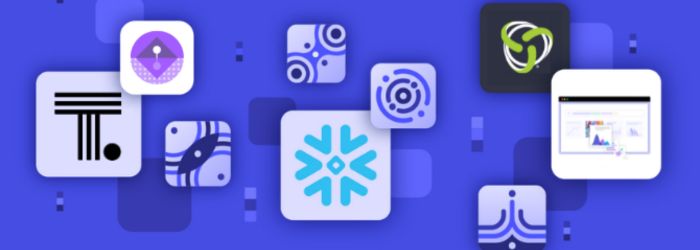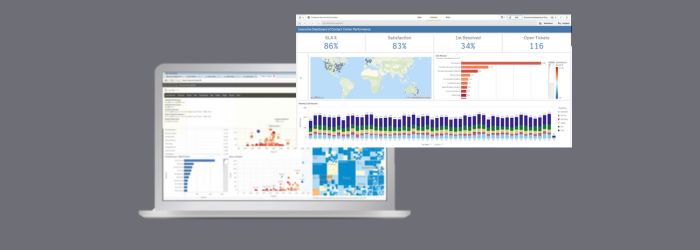Moving your data to the cloud can help manage costs and increase agility. In the cloud, you can scale up or down as needed to handle spikes in demand and control costs. The cloud also offers more choices for SaaS applications: Cloud provider marketplaces are filled with tools that can help you move your data, transform it, analyze it, and meet just about any other need you have.
Peter Choe, Data Practice Lead, Ippon Technologies USA and Shawn Johnson, Solution Architect, Matillion, chatted on a webinar about the right strategies and tools for moving to the cloud. Here are some of their top tips for a successful cloud implementation and migration.
1. Build your cloud strategy around people, processes, and technology
When building a data strategy, it’s important to look closely at your people, processes, and technology. When you understand the existing state of your organization, you can come up with a strategic plan for a future state.
People
When looking at your people, you need to understand the skill sets your employees already have. You don’t necessarily want a strategy that forces everyone to re-skill. Building off your employees’ existing skills will allow you to pivot to the cloud more quickly and better assess which gaps to fill right away and which skills to develop over time.
One great way to identify all your existing skills is to build a RACI chart. Also known as a responsibility assignment matrix, a RACI chart shows the skills, roles and responsibilities of your employees: Whether they need to be Responsible, Accountable, Consulted, or Informed on particular initiatives. For instance, you might designate a Data Engineer Consultant as someone to be Consulted for data-related initiatives.
Processes
It’s important to understand how your existing processes intersect so that when you move one thing to the cloud, you understand what else might be impacted. With a thorough understanding of your existing processes, you can create a strategic migration plan.
Technologies
There are numerous technologies that can easily be migrated from on-premises to the cloud. For example, Unix and Linux scripts can easily run on cloud platforms. Also, SQL is used extensively in on-premises solutions as well as in the cloud.
Again, assessing existing technologies can take advantage of skills your employees already have. Do research to determine if you can simply move your existing technologies over or if there’s a better technology option available in the cloud.
2. Get buy-in from your entire organization
If you want to move your business to the cloud, you need to have buy-in from everyone from low-level developers to C-level executives. Everyone needs to have a clear vision of what the goals of the project are.
When talking to developers, you may want to talk about the day to day: efficiency and ease of management. Data teams are overloaded and increased productivity is an immediate benefit. When talking to C-level executives, you’ll want to focus more on the big picture and business value: future development, speed to analytics, ROI, delivering value to end consumers and the actual dollar value of the project.
3. Start small to achieve quick wins
When migrating to the cloud, avoid the “Big Bang” approach. Start small. Doing so can help quickly demonstrate the ROI of moving to the cloud. Starting small also helps developers build up their confidence in working with new tools and technologies.
If you start with smaller, more tangible projects that yield immediate business value, you’re more likely to reinforce the importance of a bigger initiative. Also, in your first endeavor, you’ll no doubt run into bumps in the road that require you to correct course. These shifts are easier to make on a smaller project.
4. Determine the right method for moving to the cloud
There are three common methods for moving to the cloud that the majority of organizations employ for their first cloud migration: lift and shift, re-platforming, and refactoring. Additionally, some organizations may opt to engage a Data Engineer Consultant to assist in the migration process, providing expertise in handling data-related aspects of the transition.
Lift and shift
Lift and shift, or load and transfer, is exactly what it sounds like: You basically move an application and its associated data to the cloud as-is, with no redesign. When you are just beginning to learn about the cloud, lift and shift might be the easiest, fastest, and most cost-effective way (in the short term) to get an existing on-premises application or process moved to the cloud. It’s also a great way to become more familiar with the cloud.
Load, transfer & sync
This is similar to lift and shift, but once you’ve loaded and transferred to the cloud, you then try the different cloud services that are available and swap them out for increased efficiency. For example, you might move your application to the cloud, but swap out the database for a cloud-native database. With this approach, you can benefit from the automated backup and operations that cloud services provide.
Re-architect and re-platform
This approach requires the most time and effort. It involves re-imagining how your application will run on a cloud platform, then re-designing it to take full advantage of cloud-native capabilities.
This method may be useful if your current architecture is unable to scale to meet future business needs. It can also help you achieve cost savings over lift and shift in the long run. However, this method is the most time-consuming and difficult upfront.
5. Choose the right cloud provider
All the major cloud providers offer a variety of managed services and components that you can use to expedite your move to the cloud. Review the marketplaces for each provider to determine if they offer the applications and microservices you need. Some providers also offer a cloud adoption framework to help support your cloud migration plan.
Even as you choose a provider, keep in mind that you may need to make a change at some point in the future or need a multi-cloud strategy. Consider ways to make your applications cloud-agnostic.
6. Use cloud-native data loading and ETL
Whether you are performing data transformation or simply loading data into the cloud, cloud-native ETL products can help you increase productivity and accelerate time to value. Trying to adapt on-premises ETL tools and processes to the cloud won’t take advantage of the platform’s speed and scalability like a cloud-native solution will.
Matillion supports all the major cloud data warehouses, and it provides a graphical, low-code/no-code user interface that can generate SQL for you. Pre-built connectors help you get your data into the cloud from common data sources, and the ability to ‘Create Your Own Connector’ using REST API ensures that you can bring data into the cloud from virtually any source. Data teams are overloaded and Matillion helps them move faster and more efficiently, increasing the speed to analytics.
7. Always be evolving
The cloud is an ever-evolving technology, and your data journey will continue to transform alongside it. Even after the completion of your cloud migration, known as post-cloud migration, it's important to recognize that the cloud environment remains dynamic. Your move to the cloud will likely be a gradual process, and you may still maintain some on-premises applications for an extended period.
To ensure ongoing success, it's crucial to be prepared for continuous evaluation of your services, both within and outside the cloud. This evaluation allows you to identify areas for improvement, enhance efficiency, and harness the benefits of new and emerging technologies. Regardless of where your data resides, whether in the cloud or on-premises, staying vigilant and adaptable enables you to optimize your data management strategy and leverage the full potential of evolving technologies.
To learn more about having an actionable cloud strategy and selecting the right tools to support your cloud transformation, contact us here. We’re happy to provide more links to articles, research, or answer your questions.
.png?width=375&height=150&name=Untitled%20design%20(43).png)





